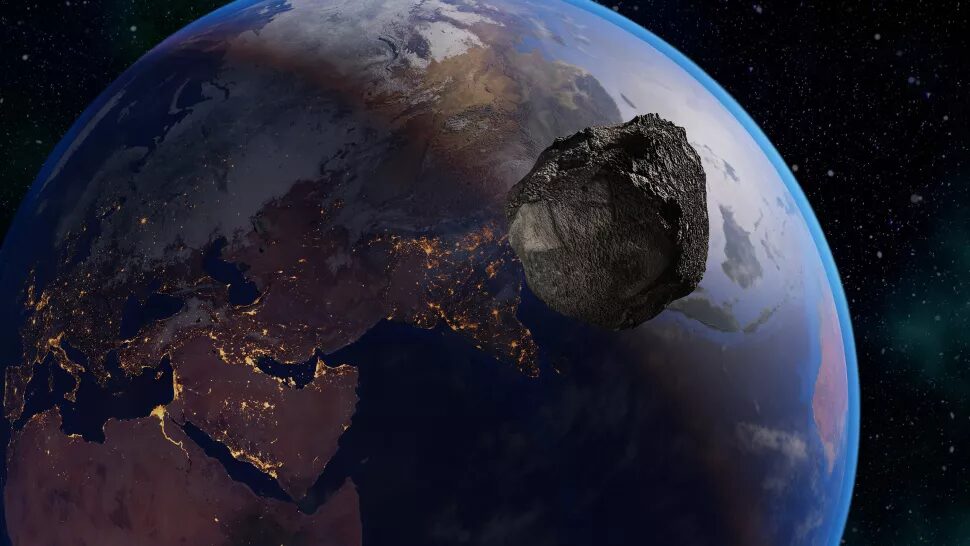
© ShutterstockThis artistic concept image shows an asteroid flying by Earth.
NASA astronomers discovered the
asteroid, known as 2022 OE2, just days ago, on July 26. The meaty space rock is estimated to measure between 557 and 1,246 feet (170 to 380 meters) wide, which is about twice as wide as an American football field is long. Astronomers also confirmed that 2022 OE2 is an Apollo-class asteroid, which means it orbits the sun and crosses the path of
Earth's orbit,
Live Science previously reported. (Astronomers know of about 15,000 such asteroids.)
The impact from an asteroid this large would release more energy than 1,000 nuclear bombs. However, this one will miss Earth by a wide margin,
according to NASA's Jet Propulsion Laboratory.
Asteroid 2022 OE2 is predicted to pass Earth at a distance of roughly 3.2 million miles (5.1 million kilometers) — more than 13 times the average distance between Earth and the
moon. For context, this is significantly farther than the
asteroid 2022 NF, which came within a mere 56,000 miles (90,000 km) — or about 23% the average distance between Earth and the moon — on July 7.
NASA monitors tens of thousands of near-Earth objects like this one and has estimated the trajectories of all of them beyond the end of the century. The good news is, Earth is in no danger of a cataclysmic asteroid impact for at least the next 100 years,
NASA has said.
Still, astronomers are aware that a minor change in trajectory — which could be caused by a collision with another asteroid, for example, or the gravitational pull of a planet — could alter the orbit of a large asteroid and put it on a potentially catastrophic course with Earth.As such, space agencies take planetary defense very seriously. In November 2021, NASA launched an asteroid-deflecting mission called the Double Asteroid Redirection Test, in which a spacecraft will slam directly into the 525-foot-wide (160 m) asteroid Dimorphos in
autumn 2022. The collision won't destroy the asteroid, but it may
change the space rock's orbital path slightly, Live Science previously reported. The mission will help test the viability of asteroid deflection, should some future space rock pose an imminent danger to our planet.
Not nice to tease people....